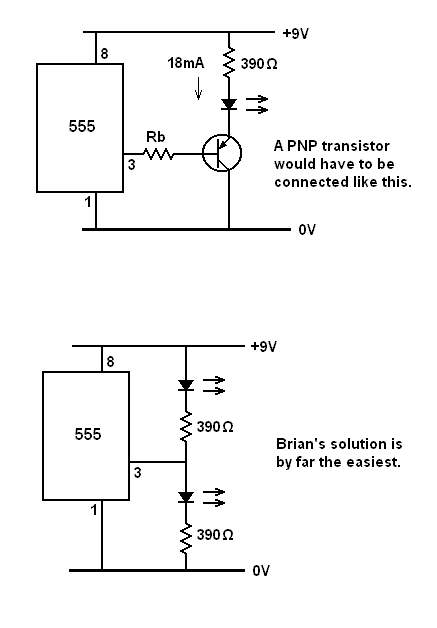this
Member level 2
Welcome people of earth.
I have a basic monostable 555 circuit with a LED on the output.
I want second LED that would be on when the "main" LED is off and vice versa.
My idea was:
connect PNP transistor: base to 555 output(pin 3), colector to 9V, and LED+resistor between emitter and ground.
I thought that when monostabe is off, then 555 pin 3 is low, and transistor should let the current flow into second LED, and when monostable goes on, then current from pin 3 should close the transistor and second led should go off.
It is not working, can somebody please explain why?
bgrds.
I have a basic monostable 555 circuit with a LED on the output.
I want second LED that would be on when the "main" LED is off and vice versa.
My idea was:
connect PNP transistor: base to 555 output(pin 3), colector to 9V, and LED+resistor between emitter and ground.
I thought that when monostabe is off, then 555 pin 3 is low, and transistor should let the current flow into second LED, and when monostable goes on, then current from pin 3 should close the transistor and second led should go off.
It is not working, can somebody please explain why?
bgrds.
